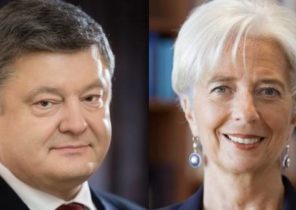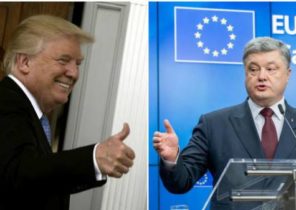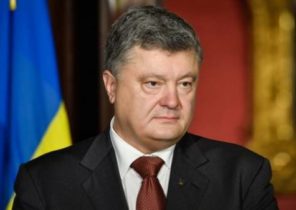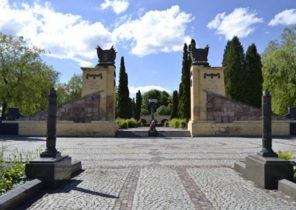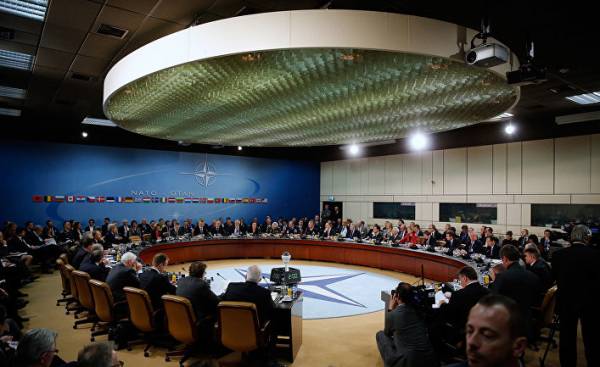
June 5, Montenegro will become the twenty-ninth member of NATO. Requirements for Montenegro greatly underestimated. The monitoring of their implementation, occurred against the background of accession negotiations with the EU, which included Montenegro and other Western Balkan countries. The NATO requirements for Ukraine (and Georgia) were much tougher, and the EU has never offered them membership.
NATO’s decision taken at the Bucharest summit 2008, envisaged the possibility of joining of Ukraine and Georgia into the Alliance in the future. Without dates, or at least the timing of the join action Plan on membership in NATO. “Welcomes NATO’s Euro-Atlantic aspirations of Ukraine and Georgia on membership in NATO. We decided today that these countries will become members of NATO. Both Nations have made valuable contributions to the work of the Alliance”, — was said then in the final Declaration of the NATO.
Montenegro and Ukraine can be compared in several ways.
First, with an army of only 2 thousand people and a military budget of $ 69 million Montenegro has little military value to the Alliance. But Ukraine can boast of the Armed forces, National guard, Border troops and security forces in a total population of 450 thousand, and a military budget of 5% of its GDP — higher than any NATO member. Montenegro can give two NATO naval base in Bari and Kotor. Given the existing NATO bases in the Adriatic, they have a low value compared to those which may be established in Odessa and Mariupol.
Second, the “object” of the military-industrial complex. Ukrainian military-industrial complex accounted for 40% of its economy in the USSR, and since the Russian aggression, he has expanded and modernized. Ukraine takes the ninth place in the list of the world’s largest exporters of weapons.
Thirdly, NATO calls on Ukraine to hold a referendum on membership in this organization. Nothing of the sort was the case with Montenegro. Based on recent polls, if a referendum in Ukraine was held today, NATO membership would have supported the majority. In Montenegro the situation is not quite the same: during the voting in the Parliament the accession to NATO was supported by only 46 of the 81 deputies (56%). In Montenegro the proportion of citizens who do not support NATO membership, higher than in Ukraine.
Fourth, the Alliance worried that the Russian-speaking regions of Ukraine and Pro-Russian political forces will strongly resist. At the same time, resistance from the Russian-speaking population didn’t bother NATO or the EU, when they offered membership to Estonia and Latvia, where large Russian-speaking community. However, their representatives — unlike Ukraine — have no citizenship. 31% of Latvian residents are ethnic Russians. This is four times greater than their share in Ukraine.
The party of regions fell apart. The Communist party was banned. Crimean Russian nationalists no longer live on the territory controlled by Ukraine. And the Pro-Russian and anti-NATO political forces in Montenegro is much more popular and electorally stronger than in Ukraine, where elections in October of 2014 helped to create a Pro-European constitutional majority. In the Montenegrin Parliament is Pro-Russian and anti-NATO MPs are more numerous than the Ukrainian Opposition bloc (the heir of the Party of regions), it has 40 members — only 10% of the total composition of the Parliament.
Moreover, the Ukrainian nationalist forces although significantly less popular than the Montenegrin, however, support NATO membership. Nationalists in Montenegro oppose joining the Alliance.
Fifth, NATO is worried about Russia’s reaction to the possible accession of Ukraine to the Alliance. However, this issue is not a purely Ukrainian (or Georgian). Russia was involved in a failed coup attempt in Montenegro, during which they planned to assassinate former Prime Minister, Milo Djukanovic. Among the 14 suspected members of the conspiracy, the trial of which will begin soon, two Russian spies.
After the Russian cyber attacks in the U.S. and Europe, Russian President Vladimir Putin began to be perceived as a threat to the EU and NATO. Therefore naive to hope that Russia will stop supporting anti-NATO operations in Montenegro and other Balkan countries.
Sixth, Ukraine and Georgia are dealing with frozen conflicts on their territory, what prevents them to join NATO. However, if NATO will stick to this position, it will actually allow Russia to use direct and hybrid aggression, to stop the European integration of Ukraine (and Georgia). But in Montenegro, NATO refused to succumb to pressure Russia. The experience of Ukraine to counter Russian hybrid aggression is invaluable for the military strategists of NATO, concerned about the probable use of this tactic in Latvia and Estonia.
The frozen conflict in Germany during the Soviet occupation of East Germany and the Turkish occupation of Northern Cyprus has not prevented West Germany and Cyprus to join NATO and the EU. Former Minister of foreign Affairs of Poland Radek Sikorski told German Chancellor Angela Merkel: “you Have been frozen in conflict for 45 years”, referring to the postwar division of Germany.
Seventh, the participation of Montenegro in NATO programs is not going to any comparison with Ukraine’s contribution to NATO’s activities. Ukraine is the only country that participated in all major operations and NATO missions, and while its troops are present in Afghanistan, formed part of a multinational NATO force in Kosovo (KFOR) and support to naval NATO operation “Active endeavour”. Ukrainian forces were most numerous in the part of the US-led coalition in Iraq-members of NATO and generally the third-largest military contingent.
The invitation of Montenegro to become a NATO member looks inconsistent, if we take into account the reluctance of the Alliance to allow the same Ukraine that can offer him much more.
